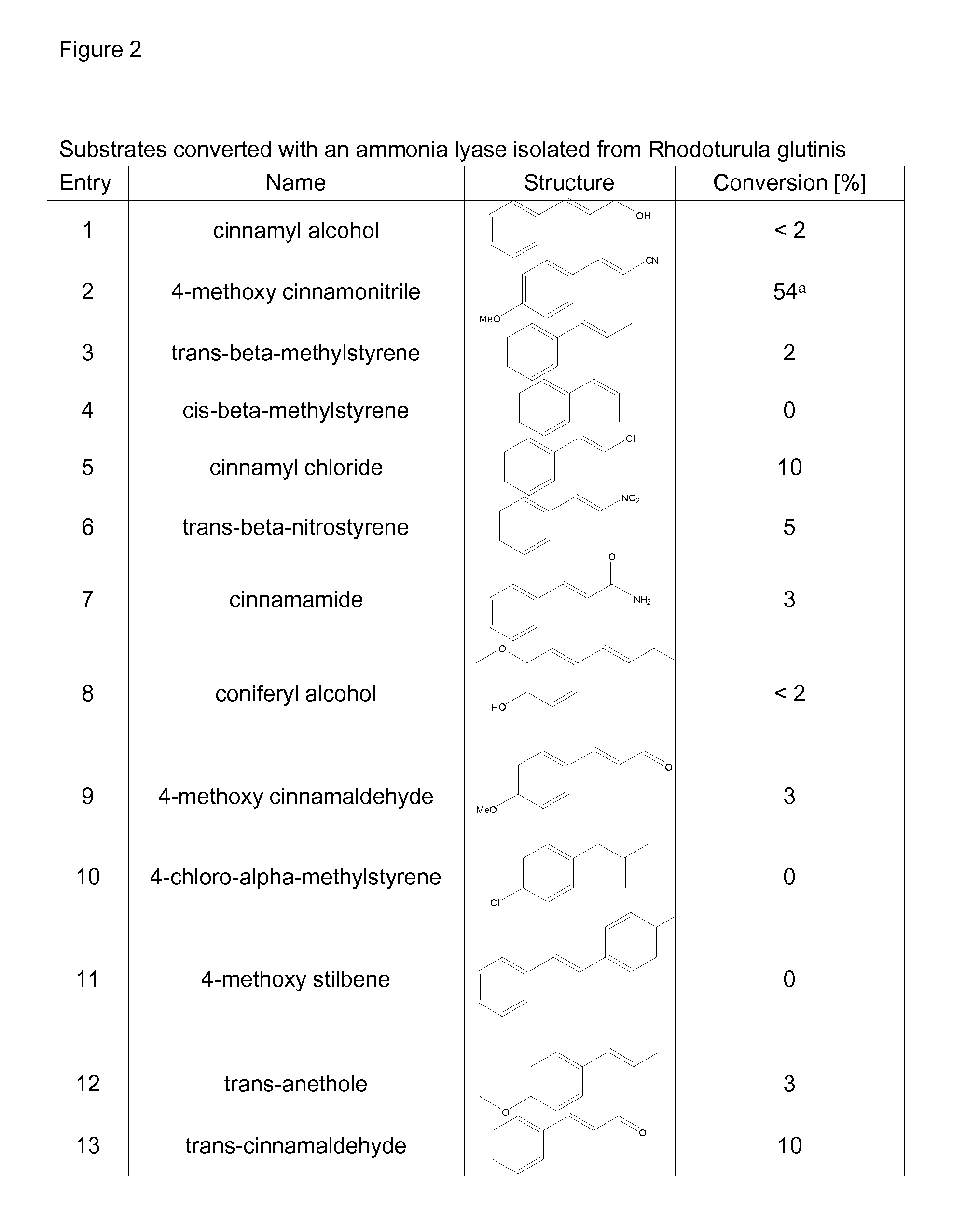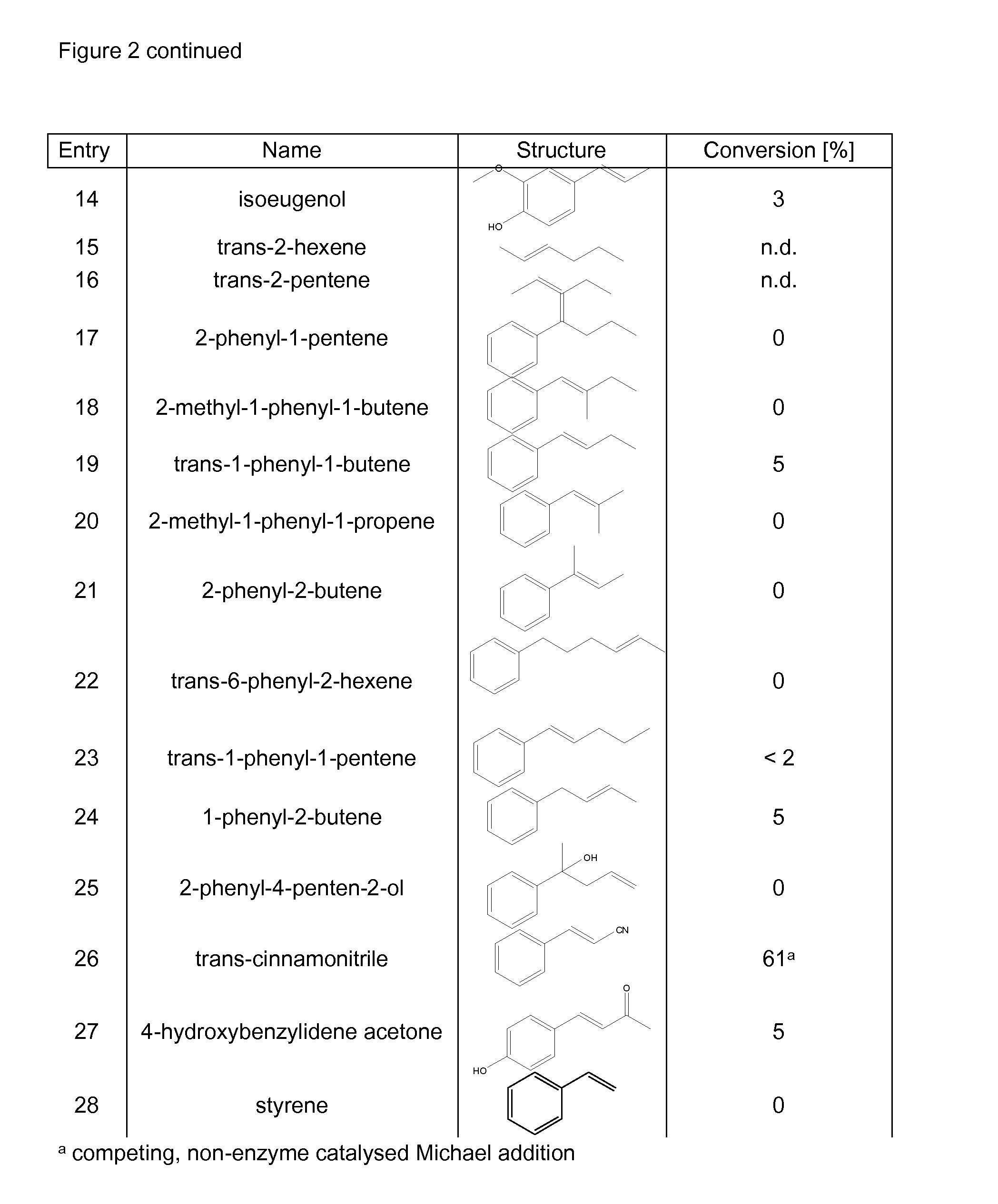Biocatalyst for catalytic hydroamination
a biocatalyst and hydroamination technology, applied in the field of catalytic hydroamination biocatalysts, can solve the problems of regiochemistry, low rate of alkenes that are catalysed by late transition metals, and limited scop
- Summary
- Abstract
- Description
- Claims
- Application Information
AI Technical Summary
Benefits of technology
Problems solved by technology
Method used
Image
Examples
examples
[0164]1) Instruments and Material[0165]The compound trans-β-methylstyrene, ammonium hydroxide solution (CAS-#-1336-21-6, 25% solution), methylamine (70% solution in H2O, CAS-#74-89-5), ethylamine (70% solution in H2O), isopropylamine (99%), hydrazine (35% solution in H2O) and hydroxylamine (50% solution in H2O) were purchased from Sigma-Aldrich. Ammonium sulfate (CAS-#7783-30-3) was purchased from Fluka. Nde I and BamH I restriction enzymes were purchased from Roche and T4 ligase from New England Biolabs. The digest and ligation were done by Geneart.[0166]GC-MS analysis was performed on an Agilent HP 6890 Series GC system equipped with an Agilent 5973 mass selective detector and a GL Focus autosampler from ATAS.[0167]2) Construction of PAL Expression Vector[0168]Phenylalanine ammonia lyase Petroselinum crispum and / or Rhodoturula glutinis with optimised codon usage were synthezised by Geneart AG (Regensburg, Germany) and cloned into the plasmid pET-16b from Novagen using Nde I and Ba...
PUM
| Property | Measurement | Unit |
|---|---|---|
| temperature | aaaaa | aaaaa |
| pH | aaaaa | aaaaa |
| pH | aaaaa | aaaaa |
Abstract
Description
Claims
Application Information
 Login to View More
Login to View More - R&D
- Intellectual Property
- Life Sciences
- Materials
- Tech Scout
- Unparalleled Data Quality
- Higher Quality Content
- 60% Fewer Hallucinations
Browse by: Latest US Patents, China's latest patents, Technical Efficacy Thesaurus, Application Domain, Technology Topic, Popular Technical Reports.
© 2025 PatSnap. All rights reserved.Legal|Privacy policy|Modern Slavery Act Transparency Statement|Sitemap|About US| Contact US: help@patsnap.com



